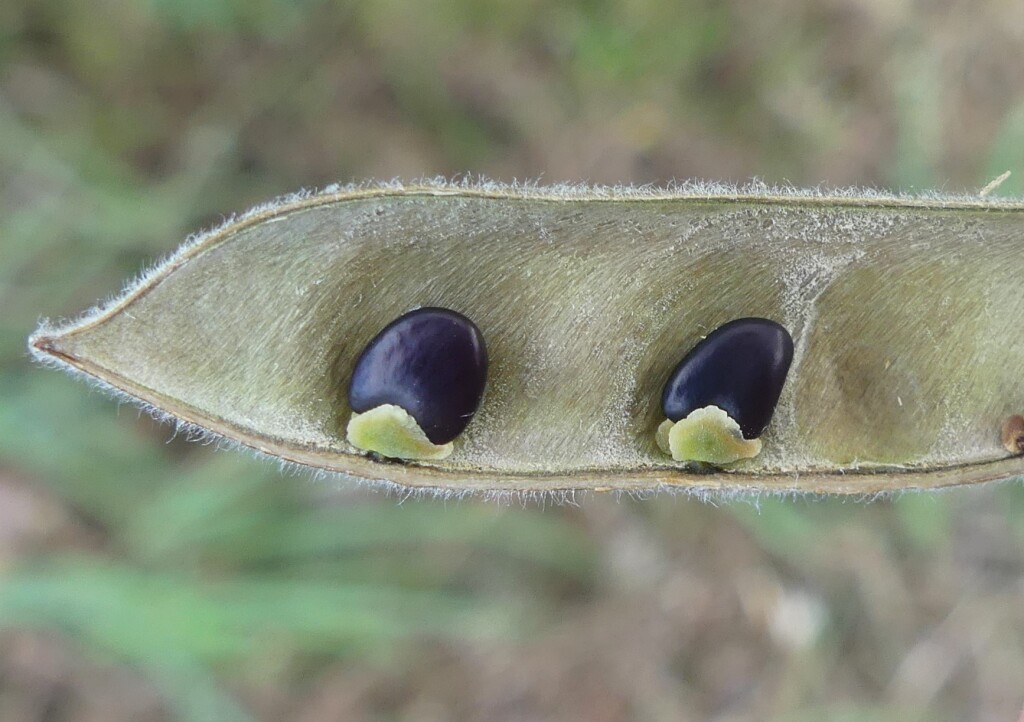Chamaecytisus palmensis
(H.Christ) F.A.Bisby & K.W.Nicholls Tree LucerneErect shrub or small tree to 4 m tall; branches pendent, softly hairy. Leaves trifoliolate, shortly petiolate; leaflets narrow-elliptic, 10–45 mm long, 4–13 mm wide, upper surface glabrous, lower surface appressed-hairy, apex acute, mucronate; petiolules to c. 2 mm. Flowers 3–7 or more; pedicels 3–10 mm long, slender, pubescent; calyx 9–10 mm long, lower lip obscurely 3-toothed, longer than the divaricately 2-toothed upper lip; corolla cream to white, c. 15 mm long; standard reniform, sides recurved, medially pubescent on back. Pod linear-oblong, 40–60 mm long, c. 12 mm wide, densely pilose, on a stalk to c. 20 mm long; seeds 4–10, elliptic-cordate, c. 4 mm long, compressed, dark brown to black, shiny; aril large, pale yellow. Flowers mainly Aug.–Oct.
LoM, Wim, GleP, Brid, VVP, VRiv, MuF, GipP, OtP, WaP, Gold, CVU, GGr, DunT, NIS, EGL, EGU, HSF, HNF, OtR, Strz, VAlp. Also naturalised WA, SA, Qld, NSW, ACT, Tas. Native to the Canary islands. A garden or hedge plant that has become widely established, mainly in higher rainfall parts of the State; often found around old habitations and readily invades disturbed areas such as roadsides.
Jeanes, J.A. (1996). Fabaceae. In: Walsh, N.G.; Entwisle, T.J., Flora of Victoria Vol. 3, Dicotyledons Winteraceae to Myrtaceae, pp. 663–829. Inkata Press, Melbourne.
 Spinning
Spinning



